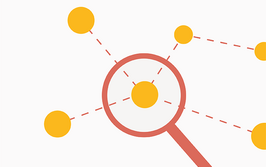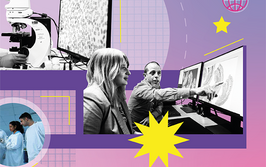On the Spot Diagnosis
Mobile devices promise a new future of point-of-care diagnostics for all
Reality always surpasses fiction. Take, for example, the cult science fiction movie “Gattaca.” In the film, the police identified citizens using instant genetic analysis on a mobile device. No one would have believed that it could actually happen. Years later, the fiction is turning into reality thanks to the latest advances in point-of-care (POC) devices, nanobiosensors, microfluidics, lab-on-chip and cellphone technologies. The idea of using your own smartphone as an instantaneous diagnostic device by just adding a few drops of your blood, saliva, urine or tears onto a biochip, is getting closer to reality every day – and it is a concept I find fascinating.
Such is their utility that POC technologies are applicable across a broad range of healthcare contexts – from preventive medicine to advanced personalized and precision medicine. Importantly, they open a window of hope for economically disadvantaged countries and low-resource environments, where most of the population does not have access to hospitals or clinical labs (but they have a cell phone).
POC devices can enable quick, simple and cost-effective identification of many diseases at a very early stage. They can identify conditions such as cancer, diabetes, stroke, pneumonia, hepatitis A, HIV, malaria or tuberculosis, including drug-resistant strains, among many other pathologies. They can provide sensitive detection of diseases and screen metabolic disorders and infectious diseases, or support adherence to treatments.
A typical POC device will identify and quantify disease biomarkers in bodily fluids due to a nanoscale biomolecular interaction between the target biomarker and its specific bioreceptor (on a biochip). How does it work? The procedure is generally very simple: the patient extracts the biochip (specific for one disease or for a panel of them) from a sealed package, aggregates the sample (a few drops of a bodily fluid), and inserts the biochip in the mobile POC device. A specific biomolecular interaction will occur, resulting in a physical or chemical change whose detection enables identification of the disease. Measurements typically take a few seconds or minutes. The data can be read and processed using a dedicated app, which will diagnose the medical condition, suggest the right treatment or connect the patient with their doctor or directly with emergency services, if required.
In my view, the ideal POC device should be disposable, require no external power source, be able to deliver the result in less than five minutes, allow for the analysis of several biomarkers in the same fluid sample, and should cost less than US$1. Academic research groups, industry, governments and policymakers are aware of these major and rapid technological developments. Although the enabling technologies exist, the main challenge is the integration and connection of all of these in compelling, portable POC platforms.
Notwithstanding the technological barriers and challenges, global market estimates have grown from US$1.6 billion in 2013 to $5.6 billion in 2019 (according to Transparency Market Research), which is driving significant commercial interest and major competition. Also, several important prizes, such as the Qualcomm Tricorder Xprize (US$10 million) (1), the UK Longitude Prize (£10 million) or the EU “Horizon Prize for better use of antibiotics” (€1 million), the latter two aimed at solving the problem of global antibiotic resistance, indicate why we need revolutionary diagnostic tools.
I anticipate a frantic struggle among the major players to develop the first POC smartphone for routine use in our daily lives. Such mobile health monitoring tools will open the door to a new world where preventive healthcare and truly personalized medicine are routine. The technology is already here. But are we ready for the next diagnostic revolution that places healthcare into the palm of your hand?
- M Schubert et al., “Where no healthcare device has gone before”, The Pathologist, 6, 18–30 (2015). thepathologist.com/issues/0615/301
Laura Lechuga is Professor, Nanobiosensors and Bioanalytical Applications Group, Catalan Institute of Nanoscience and Nanotechnology (ICN2), Barcelona, Spain.




















